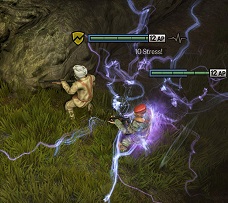Continuity, Discontinuity & Darwin’s Technofix
There is an interesting article in the current issue of New Scientist, an essay by W.Brian Arthur on his theory of technological evolution;
“[Advocates of technological evolution’s] reasoning, very much à la Darwin, is that any given technology has many designers with different ideas – which produces many variations. Of these variations, some are selected for their superior performance and pass on their small differences to future designs. The steady accumulation of such differences gives rise to novel technologies and the result is evolution.“
This basic structure is also something that I’m thinking about a lot, but in relation to p2p networks. I’m interested in how the software of p2p changes over time and in relation to the environment that it operates. Now W.Brian Arthur is suggesting that the pure evolution we find in biology is a seductive idea, but does not really fully fit;
“This sounds plausible, and it works for already existing technologies – certainly the helicopter and the cellphone progress by variation and selection of better designs. But it doesn’t explain the origin of radically novel technologies, the equivalent of novel species in biology. The jet engine, for example, does not arise from the steady accumulation of changes in the piston engine, nor does the computer emerge from accumulated changes in electromechanical calculators. Darwin’s mechanism does not apply to technology.”
Now this is interesting to me as I’m currently reading George Basalla’s 1998 book, ‘The Evolution of Technology‘ where he also address the jet-engine point;
“Despite the seemingly revolutionary character the turbojet engine was not a machine antecedents. The turbojet belongs to the two-hundred-year-old tradition of turbine development that encompasses water turbines, turbine water pumps, steam turbines, internal combustion gas turbines, piston engine superchargers, and turbosuperchargers. None of these has pistons and cylinders, but they all have a turbine wheel with fins and buckets that, when acted upon by water, steam or hot gases cause the wheel to rotate rapidly. Therefore at the level of the artefact, two centuries of has prevailed in the family of turbines, whatever their varied uses or energy sources.” (p29)
This Basalla’s core point – the continuity of technology – that changes in the technology over time have a continuity to them that has been obscured by the cultural myth of the great inventor. You can see his point with the very idea of evolution itself; Darwin gets the credit, but he put together the pieces of the concept from the work done by other people – and he was not the only one to arrive at this point; hat tip to Alfred Russel Wallace for one. If I understand what W.Brian Arthur is getting at, then it is a similar idea to that of Basalla – about how the building blocks of technology great a continuity. In the example of the turbojet, this continuity was not to be found in the direct family lineage, but in the relatives. W.Brian Arthur calls this concept ‘combinatorial evolution’:
“In a nutshell, then, evolution in technology works this way: novel technologies form from combinations of existing ones, and in turn they become potential components for the construction of further technologies. Some of these in turn become building blocks for the construction of yet further technologies. Feeding this is the harnessing of novel phenomena, which is made possible by combinations of existing technologies.“
I take W.Brian Arthur’s point; I’m also grappling currently with a similar issue; how closely we can draw analogies from the DNA of living things as to that of the source code we find in each generation of software. The answer is still ongoing…




